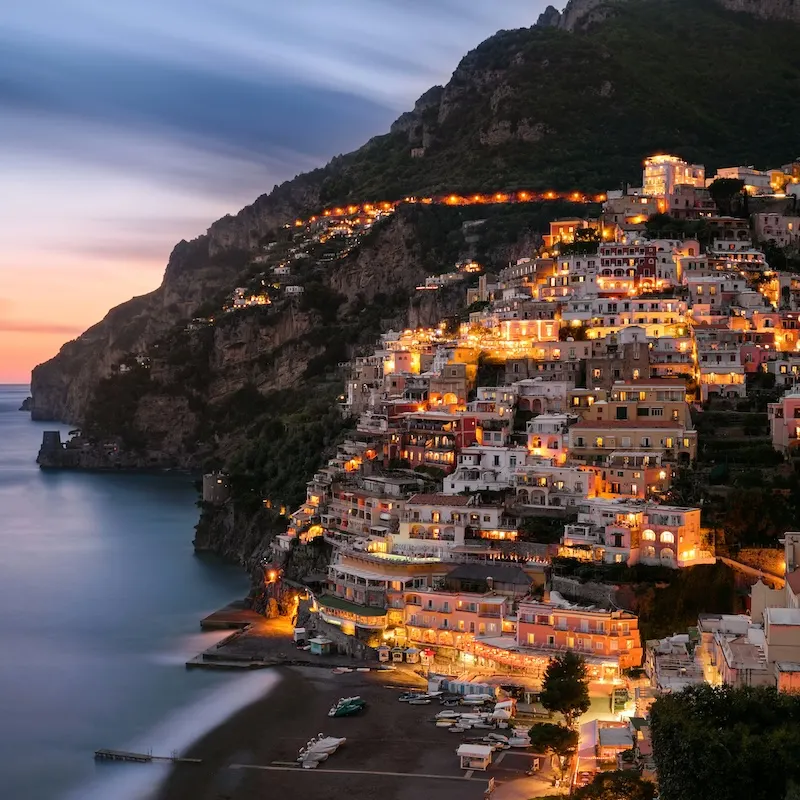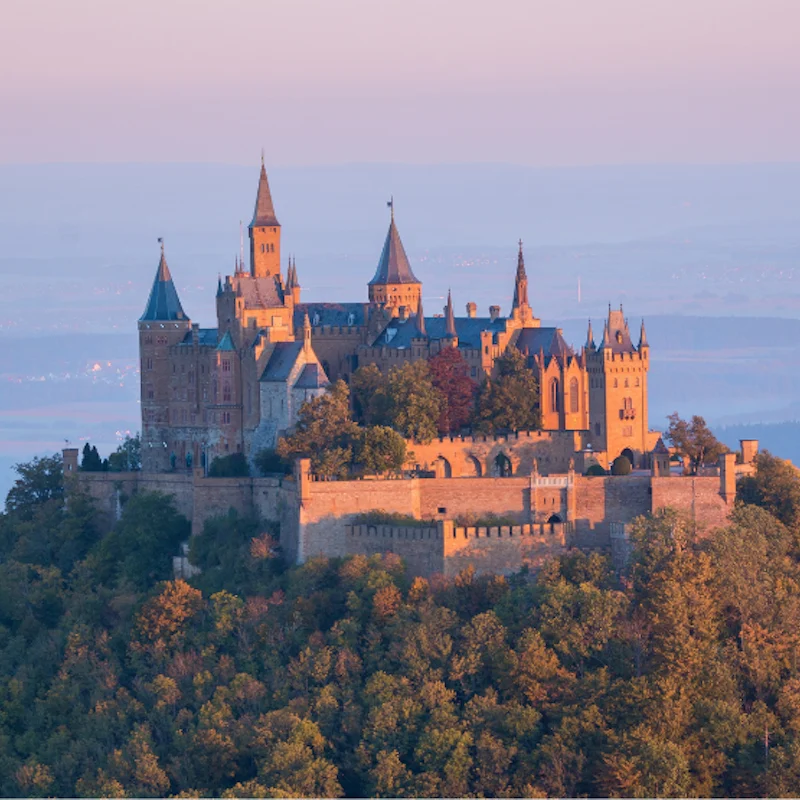The Best Places to Go in Spain That Aren’t Barcelona or Madrid
Sarah Pardi - August 5, 2025
Home > Travel Ideas & Inspiration > The Best Places to Go in Spain That Aren’t Barcelona or Madrid
Share this post

San Sebastián: a coastal gem for foodies
Who it’s for: foodies, beachgoers
Is there an airport?: Yes
Does it have Uber?: Yes
Located in Northern Spain on the Bay of Biscay, San Sebastián is famous for its spectacular scenery, sandy beaches, and multiple Michelin Star restaurants.
This small city has something for everyone, from outdoor attractions to museums, and plenty of historical places to help you soak up the Basque culture during your stay.
While in San Sebastián, you’ll enjoy walking through the Parte Vieja (old town), which is filled with bars, shops, and important monuments like the 16th-century San Vincente church. Foodies will be delighted to try the local specialty, Pintxos, a type of tapas unique to the Basque region.
The weather is great in July and August, but the city can be quite busy as it’s the peak of tourist season. If you have some flexibility, a trip in May, June, September, or even October should still be pleasant enough, but with smaller crowds.

Marbella: luxury in the Mediterranean
Who it’s for: luxury travelers, golfers, water enthusiasts
Is there an airport?: No, but there are airports in nearby cities that have taxis and rideshare services available.
Does Marbella have Uber?: Yes
Marbella, a seaside town on Spain’s famous Costa del Sol, offers Mediterranean beaches, upscale shopping, luxury yachts, and more for a relaxing, yet lavish trip to the sunny south.
While visiting Marbella, you can book a tee time at the Los Naranjos Golf Club, where you'll play amongst green rolling hills and palm trees.
If you’re looking for a stroll, you can explore the Parque de la Alameda with rich blue tiling and tropical foliage lining the walkways. Avenida del Mar is another must-see pathway offering access to shops and beaches. To top it off, this thoroughfare is decorated with sculptures created by Salvador Dalí!

For a once-in-a-lifetime adventure, you can even hop aboard a catamaran or book a whale-watching or dolphin-spotting tour off Marbella’s crystal blue waters.
Marbella's summers are sunny and hot, and the water is warm, so July and August are excellent times to visit. However, it’s also the busiest time of year. If you prefer fewer crowds, June and September are still warm, but peak season starts to dwindle.

Formentera: the smallest island in Spain
Who it’s for: beach lovers, travelers who want some R&R
Is there an airport?: No, but you can fly into neighboring Ibiza and take a ferry
Does Formentera have Uber?: No
You may have heard of Ibiza – an island famous for its iconic nightlife, but have you heard of its little sister, Formentera?
Formentera is a small island in the Mediterranean that is only accessible by sea, but don’t worry! You can easily travel there by public aqua buses and ferries.
This small Spanish island is much quieter than its neighbor, offering serene beaches, bright blue waters, and opportunities to unwind and soak up the southern European sunshine. Between beach naps, Formentera offers water activities such as snorkeling and sailing. There are also restaurants on the island where you'll get a taste of the delicious local cuisine.
Formentera, while small, does have hotels and vacation rentals on the island, as well as bike and scooter rentals. It’s also possible to stay in Ibiza and take day trips to Formentera if you’re looking for something a little less remote for your overnight stays.
Mid-June to mid-September is the best time to visit for hot weather and warm waters.
Ready for the best vacation yet?
Explore Spain with confidence by protecting your trip with travel insurance, 100% online! ??

Córdoba: a history lover’s playground
Who it’s for: history buffs, architecture enthusiasts
Is there an airport?: Yes, but it’s very small. Many travelers fly into Malaga or Seville, then by car to Córdoba (1-2 hours away).
Does Córdoba have Uber?: Yes
Located in central southern Spain, Córdoba is a small city rich in history, as it was a very important Roman center, and then an Islamic hub in the Middle Ages. Because of this, Córdoba boasts some of the most unique architecture you’ll see: a rich blend of Roman, Moorish, and Spanish motifs and designs.
With museums, celebrated and highly decorated mosques and cathedrals, as well as an ancient Roman bridge, this town will leave the history-minded tingling. Make sure you explore the Centro Histórico (great photo opportunities!), as well as the Jardines del Alcázar de los Reyes Cristianos, a thoughtfully landscaped garden.

For the quirky traveler, Córdoba is famous for its patios. In fact, there is an annual event each May celebrating the uniquely decorated patios of Córdoba. During the festival, locals compete for the best-decorated outdoor space, and these competing patios are open to the public to see.
It's worth visiting Córdoba in May to see the patios. Unlike many cities in Spain, visiting in July and August isn’t generally advised, as Córdoba is one of the hottest cities in Spain.

Teruel: a UNESCO World Heritage site
Who it’s for: Travelers seeking a unique destination, architecture lovers, and outdoor enthusiasts
Is there an airport?: Technically, yes, but travelers visiting Teruel will need to fly to a nearby city and take a train or car. Options include Castellón, Valencia, Madrid, and others.
Does Teruel have Uber?: Yes
This small town in Eastern Spain is a bit off the beaten path, making it perfect for travelers looking for a destination unlike any other. Teruel is high-altitude, and hiking enthusiasts will find a variety of local tours to choose from, offering incredible views and a great workout to boot.
Due to its unique history, Teruel is celebrated for its Mudéjar architecture (which is a mixture of Gothic and Islamic aesthetics). In this style, the city has incredible and highly decorated archways, towers, monuments, and more, giving you photo opportunities at every turn.

In Teruel, you don’t want to miss the stunning Torre de El Salvador, as well as the Los Arcos (what’s left of a 16th-century aqueduct). February is a fun time to visit, as locals dress up in medieval attire and recreate Isabel’s wedding, though the weather may not be ideal.
With museums, churches, and historic landmarks throughout the town, Teruel provides a unique vacation that will leave your cultural cup brimful.

Ronda: a town in a national park
Who it’s for: outdoor enthusiasts, photographers, history lovers
Is there an airport?: No. Travelers can fly to Malaga and then take a bus or rideshare to Ronda.
Does Ronda have Uber?: Yes
Built along a dramatic gorge, Ronda is the perfect destination for travelers looking for something different. This small town is located within the boundaries of the Sierra de las Nieves National Park in Southern Spain, making it popular for the adventure-inclined.
For those looking for a more relaxing trip, Ronda also caters. With its historic, walkable streets lined with shops and restaurants, a stroll through Ronda is perfect for finding souvenirs or enjoying a glass of Spanish wine. Throughout the entire town, you’ll find historical landmarks, museums, and even one of the oldest bullrings in Spain.
While Ronda isn’t a mainstream destination, it has been a niche attraction throughout time. It was a popular summer haunt for writers like Hemingway and Orson Welles, and it’s no wonder. With its sweeping canyons, cobblestone streets, and beautiful buildings, Ronda gets the creative juices flowing.
It is worth noting: Ronda gets very hot during the summer months, so the best time to visit is typically late Spring or early Fall.

Consuegra: where Don Quixote meets art
Who it’s for: outdoor enthusiasts, photographers, history lovers
Is there an airport?: No. The closest airport is in Madrid, where travelers can take a bus or rideshare to Consuegra (about an hour and a half away).
Does Consuegra have Uber?: Yes
The small town of Consuegra offers more than the eye can see. The main attraction is a series of prized windmills made famous in the 17th century by Miguel de Cervantes’s Don Quixote. Twelve windmills exist here today, and each one has its own name, such as Caballero del Verde Gabán (Spanish for Knight of the Green Coat) and Chispas (Sparks).
The windmills aren’t the only attraction in Consuegra, however. Sitting atop a hill is the Castillo de Consuegra, a castle with origins dating back to the 12th century! Another must-see landmark is the El Pozo los Lagartos (The Lizards Well). The El Pozo los Lagartos is an outdoor art space with unique statues, tiling, and walkable paths. This brightly colored attraction is a must.
Consuegra is known for having a mild climate, with the summer months being the most comfortable for travelers.

Cudillero: a picturesque fishing village
Who it’s for: Travelers in need of R&R, sea enthusiasts, art lovers
Is there an airport?: No, but there are nearby airports. A common one is Asturias, about an hour and a half away.
Does Cudillero have Uber?: While technically functional, there may not be drivers available. Cudillero is very small and walkable, but keep in mind it is hilly.
Located on the Bay of Biscay in Northern Spain, Cudillero is a hidden town, tucked into a natural coastal nook. With bright buildings, sunny patios, and ocean views throughout this hilly village, Cudillero is climbing in popularity among travelers.
This village is perfect for anyone who wants to soak up the sun in a brightly-colored destination. With houses of all hues, intricate tilework throughout, and seashells reimagined as decorative elements, Cudillero itself is a living and breathing artistic masterpiece.
Cudillero has a fairly mild climate, with summer months being the warmest (but also the busiest).
With its local fishing industry, Cudillero is known both for its many diverse beaches as well as its decadent seafood. On top of that, cider is a beverage enjoyed by the locals, so it’s not something to skip out on should you find yourself in this eye-catching location.

Cádiz: a Southern pastel paradise
Who it’s for: Travelers in need of R&R, sea enthusiasts, art lovers
Is there an airport?: Travelers will need to fly to nearby Jerez or Seville. From there, you can take a train, bus, or car.
Does Cádiz have Uber?: Yes
Situated on the Iberian Peninsula, Cádiz is a stunning seaside town with pastel buildings, cobblestone streets, and blue waters.
Not only is it beautiful, but it's also an important historical relic. In the 16th century, the local port was vital to both trade and exploration. Additionally, there are more than 100 watchtowers throughout the area, as well as iconic churches, like the Catedral de Cádiz.

Travelers today will enjoy visiting the ruins of the local castle, Castillo de Santa Catalina, as well as the local plazas, like the Plaza San Antonio, with unique, bright architecture. There’s even a Roman theatre!
While there’s so much to see within the city, there are also beaches! The main beach in Cádiz is La Caleta, within a small bay. The summer months are very warm, perfect for a dip in the southern water!

Granada: rich culture and the Sierra Nevadas
Who it’s for: History buffs, art lovers, travelers craving a rich cultural experience
Is there an airport?: Yes
Does Granada have Uber?: Yes
Granada is a city located in the foothills of the Sierra Nevada Mountains in Southern Spain, making it home to cold winters and hot summers. With one of the most famous palaces in the world, La Alhambra, Granada is an unforgettable destination.
Visible through most of the city, the historic La Alhambra, Generalife, and Nasrid palaces sit on a compound atop a steep hill. La Alhambra is one of the largest and best-preserved Islamic palaces in the world, with highly decorated ceilings, columns, archways, and fountains.

In fact, Washington Irving lived in La Alhambra for a short time, and movies, such as Lawrence of Arabia, have been filmed there.
The La Alhambra isn’t the only thing to see in Granada, however. In the city, you'll want to explore the bright white buildings and narrow, cobblestone streets in the Albaicín neighborhood. Many of these streets still exist according to the medieval city plans, giving you a real sense of what it was like to live here throughout time.
Additionally, you’ll find many churches, mosques, museums, and local markets in the streets of Granada. With a strong Jewish and Arabic heritage and background in the city, you’ll find local gastronomy with cumin, coriander, raisins, almonds, or honey.
Granada is hot in the summer months. Late April through early October is considered the best time to visit.

Mérida: Spain’s Roman city
Who it’s for: Travelers with an interest in Roman history
Is there an airport?: No, travelers can fly into nearby Badajoz (about a half hour away).
Does Mérida have Uber?: Yes
Founded by the Romans in the 1st century B.C., Mérida is home to some of the most well-preserved Roman landmarks in Spain. With a Roman theater (still used today), aqueducts, the Temple of Diana, a Roman bridge, and more, Mérida allows you to see what Roman life was like outside of Italy.
With the incredible variety of Roman ruins, Mérida is also home to Spain's National Museum of Roman Art, where visitors can see rare pottery, jewelry, and artwork from the Roman Empire.
Alongside its Roman history, Mérida enchants with beautiful cathedrals, an old town with narrow streets, palm trees, fountains, and plenty of places to pop in for a quick, refreshing drink and tapas.
Mérida gets quite warm in July and August. The best travel times are late spring to early fall.

From its Northern villages to its historic cities and southern getaways, Spain has so much to offer beyond Madrid and Barcelona!
Best Places to Go in Spain: a summary
- San Sebastián: Northern Spain, beaches, delicious food
- Marbella: Southern Spain, luxury, dolphin spotting, and beaches
- Formentera: Mediterranean island, remote, peaceful, small
- Córdoba: Central South Spain, rich in history and architecture
- Teruel: Eastern Spain, UNESCO World Heritage site
- Ronda: Southern Spain, cliffs and canyons
- Consuegra: Central Spain, windmills
- Cudillero: Northern Spain, bright buildings, fishing village
- Cádiz: Southern Spain, warm water, pastel buildings
- Granada: Sierra Nevadas, world-renowned palaces
- Mérida: Western Spain, Roman ruins and archeology
Related posts
Upcoming travels ? Get Insured !
Find the right insurance for your trip by using our powerful comparison tool!
Sarah Pardi - November 21, 2025
Sarah Pardi - November 20, 2025
Sarah Pardi - November 14, 2025
Sarah Pardi - November 13, 2025





